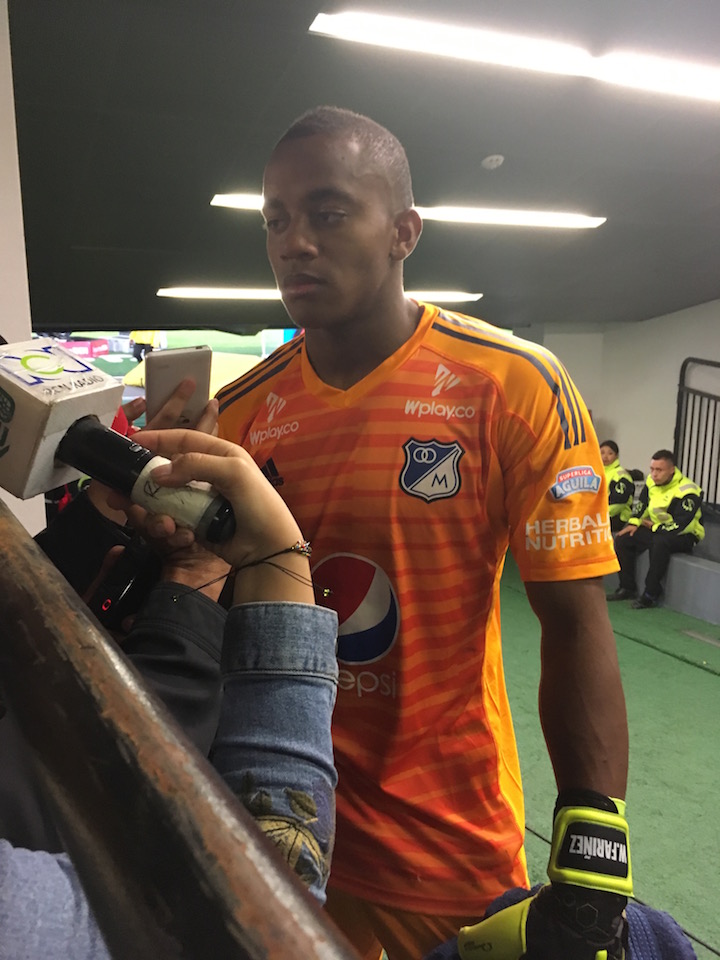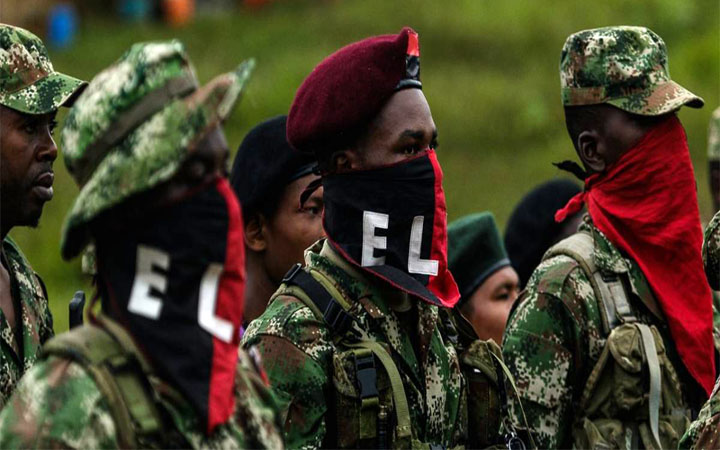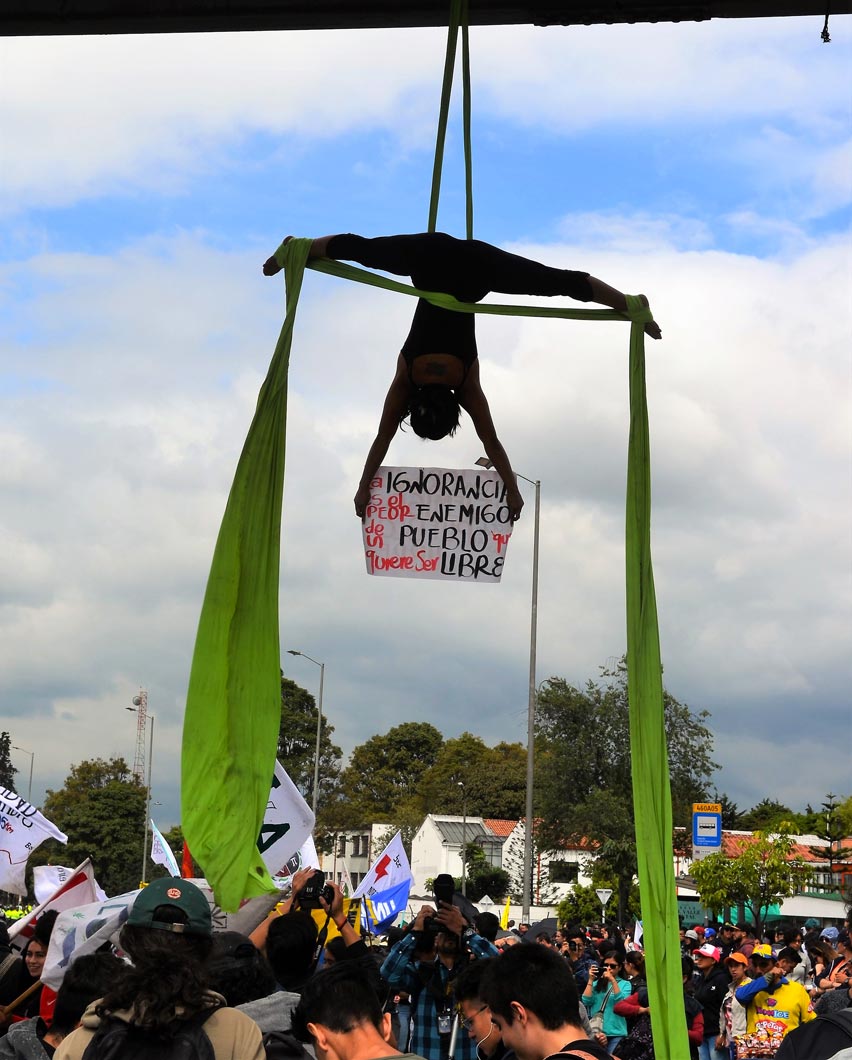With pounding percussion, the city’s exuberant samba-reggae warriors are becoming a global phenomena. And anyone can get in on the act.
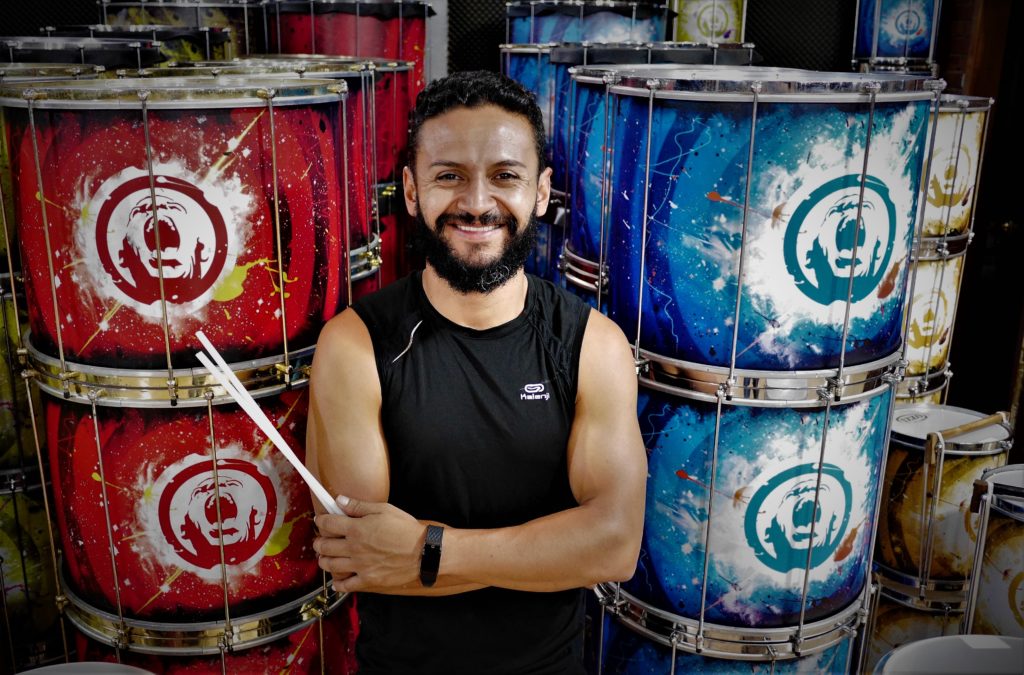
Photos: Steve Hide
Aaaaaiiiinnnjjjjaaaaa! First a rebel yell, then the drums of Aainjaa, the “most powerful batucada on the planet” echo over downtown Bogotá starting with the repique, a Brazilian drum whipped into a fast samba rhythm with two thin sticks, then quickly joined by a volley of snare drums, followed by deep bass surdos that shake the city streets as tambours and bells chime in.
Not content with just beating out tempos, the Aainjaa performers – athletically as taught as their drums – dance and sway in perfect time to the escalating rhythm, then break out into animal yells and an aggressive display of head turning, eye-rolling and tongue-poking that look something like an upbeat musical Maori Haka.
Are there any New Zealand All Blacks hidden in the pack? I ask group founder Homero Cortés.
Not one Kiwi. He smiles: “You know, some indigenous communities here in Colombia have similar traditions of war-like ritual encounters with drums and combat.”
This accounts for the martial feel to Aainjaa’s exuberant shows, with up to 150 dancers keeping rhythm while leaping their way with heavy drums through Bogotá’s appreciative crowds.
Related story: Dance in the City
Love and discipline are the two pillars of training for what Cortés describes as a “social cultural movement” with the “power to transform lives.”
Bloco’s from Brazil
‘Aainjaa’ means ‘to create’ in wayuunaiki, the language of the Wayuu people of Colombia’s La Guajira. Though the group’s musical influences were born in Brazil, Cortés is keen to explore Colombia’s rhythms and rich indigenous culture.
Cortés is from Bogotá but spent his formative years in Barcelona, Spain, where he studied music and percussion, particularly samba-reggae rhythms known as batucada played by the bloco street drummers from Brazil. These are maybe best recognised globally in Michael Jackson’s ‘They Don’t Really Care About Us’ which he recorded in 1995 with legendary bloco Olodum.
But particularly in Brazil, Olodum is a musical phenomenon in its own right. The group has recorded numerous records since the 1980s and accompanied many musical greats. Its origins are deeply rooted in social projects in Salvador da Bahia.
In Brazil, drums have traditionally been seen as ‘toys for boys’ with mostly male blocos. The big bass surdos were too heavy for women, the theory went. Then came all-female Didá, also from Bahia, to challenge those gender norms.
Back in Bogotá, Aainjaa is refreshingly gender mixed. The movement is also adding Colombian twists to the bateria, such as cumbia-reggae rhythms.
Today the dance movement has a core of around 20 professional performers that turn heads at music and percussion festivals in countries such as Canada, Italy, Spain, Russia and China. In Colombia the main work continues with centres in Bogotá and Medellín and hundreds of students training once or more a week.
Don’t wake the neighbours…
Perhaps wisely, given the noise they make, Aainjaa’s Bogotá base is a warehouse in Ricaurte’s industrial zone. No neighbours to disturb here. The site boasts several large practice studios, an office, a recording suite and drums. Lots of drums. So many drums I get this overwhelming urge to beat one.
Could anyone become a warrior drummer?
Percussion is our most ancient musical form. It’s been with us since the start of human history
Homero Cortés
“Of course,” says Cortés. “We have students from five to 67 years old. Everyone is welcome.” He particularly keen for word to spread that overseas visitors living in Bogotá are welcome to join the movement.
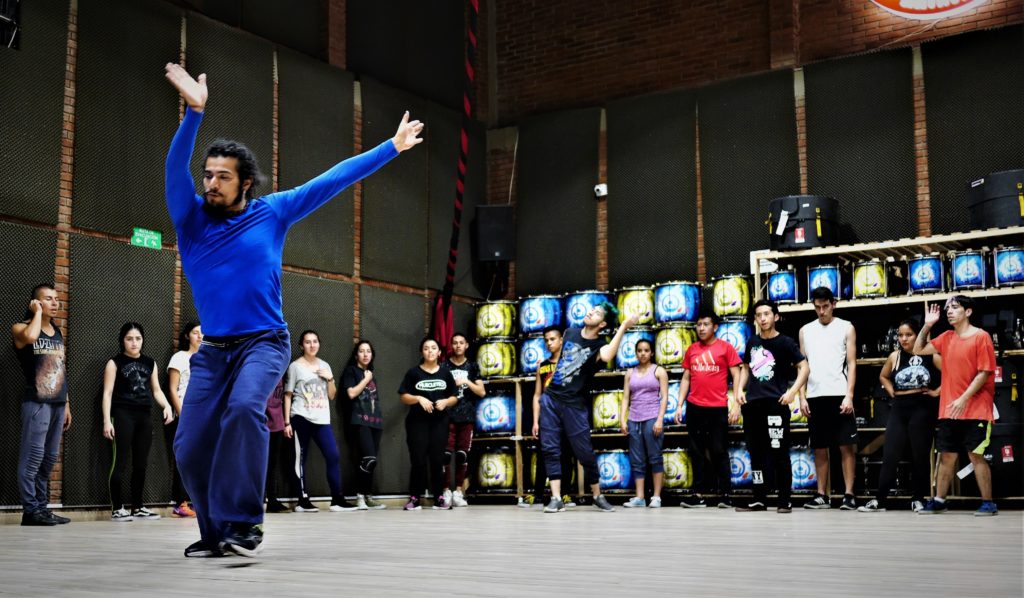
The training as physically tough – hours of dancing and exercise – but also energising, says Cortés. Teamwork and shared values are what drive the group, which is not shy to take political stands and declares itself online as an artistic antidote to “obtuse and conservative Colombia.” Drummers regularly take on social causes and perform in colleges, parks, poor barrios and Bogotá’s prisons.
It seems the movement has tapped into a potent life force that flows from drumming.
“Percussion is our most ancient musical form. It’s been with us since the start of human history,” say Cortés, now planning to expand his operation to Mexico and beyond.
With Aainjaa, the drums will go further.
- Want to train with Aainjaa? The movement has studio workshops in Bogotá (close to Ricaurte transmi station) and in Medellín. Go to the Aainjaa website for information on courses.
- Information on upcoming performances, often free in public spaces, can be found on Aainjaa’s Facebook page.

